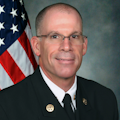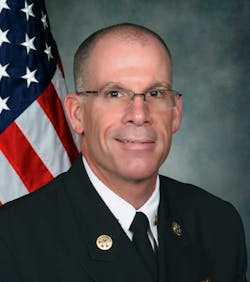In 2004, at the original Life Safety Summit in Tampa, FL, the National Fallen Firefighters Foundation (NFFF) set a goal to reduce line-of-duty deaths by 25% within the first five years and 50% within 10 years. Today, 10 years later, the goal is to reduce LODDs to a number below 50. Yet, unlike in years past, the low-hanging fruit and the quick-fix opportunities are no longer. To achieve this goal, we must be willing to take on the highly complex and very personal issues of firefighter health and fitness.
It should be no surprise to anyone that our greatest degree of risk as firefighters is that of a medically induced fatality. In 2013, one-third of the LODDs experienced nationwide were from overexertion, stress and related medical issues. Of the 32 deaths, 29 were classified as sudden cardiac deaths, most notably heart attacks.
While the fire service has always made a conscious effort to reduce firefighter injuries and fatalities through various safety initiatives, it wasn’t until the publication of NFPA 1500 in 1992 that safety truly became a focal point of the American fire service. And let’s be clear, while many may see the pursuit of safety as controversial today, it should be noted that the original publication of NFPA 1500 was the most controversial standard ever produced up until the publication of NFPA 1200, the original staffing standard.
In 1996, two training programs, Saving Our Own and the Get Out Alive, created an unmatched wave of interest and enthusiasm in support of rapid intervention operations, a concept that at the time was outright rejected by a large segment of the American the fire service.
To the credit of many, NFPA 1500 and the countless safety and survival programs that have since been developed and delivered by instructors throughout the country, we have overcome the initial reluctance that oftentimes comes with the demand for change and now reap the rewards of fewer fire ground related fatalities. Yet, the elephant in the room, cardiac-related emergencies, continues to haunt us.
It’s been said that when you set minimum standards, you effectively set a maximum performance level. In some cases, a minimum level of performance might be all that we can ask for or even achieve. But what happens when you don’t set a standard at all? Case in point, most fire departments today have stringent physical fitness requirements for entry-level personnel, but the better majority of fire departments across the country operate without any form of minimum fitness requirements for their existing firefighters and fire officers.
I share this thought with the full understanding that the complexity of this problem is far beyond a simple fire department physical fitness program. Cardiac-related emergencies and deaths within our profession have a variety of contributing factors, some that are within our control and some that are not. So I ask the question, what will it take for us to venture beyond the low-hanging fruit, the vogue issues of modified fireground strategy and tactics and get to the heart of the issue (no pun intended) as it relates to LODDs?
For those who challenge the ability to introduce and enforce a physical fitness standard within the fire service, I counter with the question, why is it that wildland firefighters, who include paid and volunteer members, have been able to uphold a physical fitness standard for entry-level personnel as well as incumbents, yet the larger, more prominent structural side of the house has shied away and, in many cases, even fought the idea of an equally demanding standard?
History has proven that what’s fought on the front end is oftentimes accepted over the course of time. But unlike many preceding issues, firefighter health and fitness is personal, and in many cases it can become the difference between active service as a firefighter, an alternative assignment to a non-combat duty assignment and/or retirement. And while these issues can’t be ignored, the critical issue of one’s personal health and life longevity cannot be overshadowed.
For the fire service, we are at crossroads, a point where our success has put us in the position that we must now confront the harsh realities of raising the bar to demand that physical fitness become a priority for all firefighters (paid or volunteer) or accept the unacceptable: the preventable loss of firefighters.
We work and volunteer in a very unforgiving environment, and while technology may provide us with the tools and equipment to control and/or offset the hazards we encounter, it’s our personal investment in health and fitness that will ultimately allow us to live and work/volunteer another day.
About the Author

Timothy E. Sendelbach
Editor-in-Chief
Timothy E. Sendelbach is a 30-year student and educator of the fire and emergency services, and former editor-in-chief for Firehouse. He has served as an assistant fire chief with the North Las Vegas, NV, Fire Department, as the chief of training for Savannah (GA) Fire & Emergency Services and as assistant fire chief for Missouri City, TX, Fire & Rescue Services. He is a credentialed Chief Fire Officer and Chief Training Officer and has earned a master’s degree in leadership from Bellevue University, bachelor’s degrees in fire administration and arson and an associate’s degree in emergency medical care from Eastern Kentucky University.
